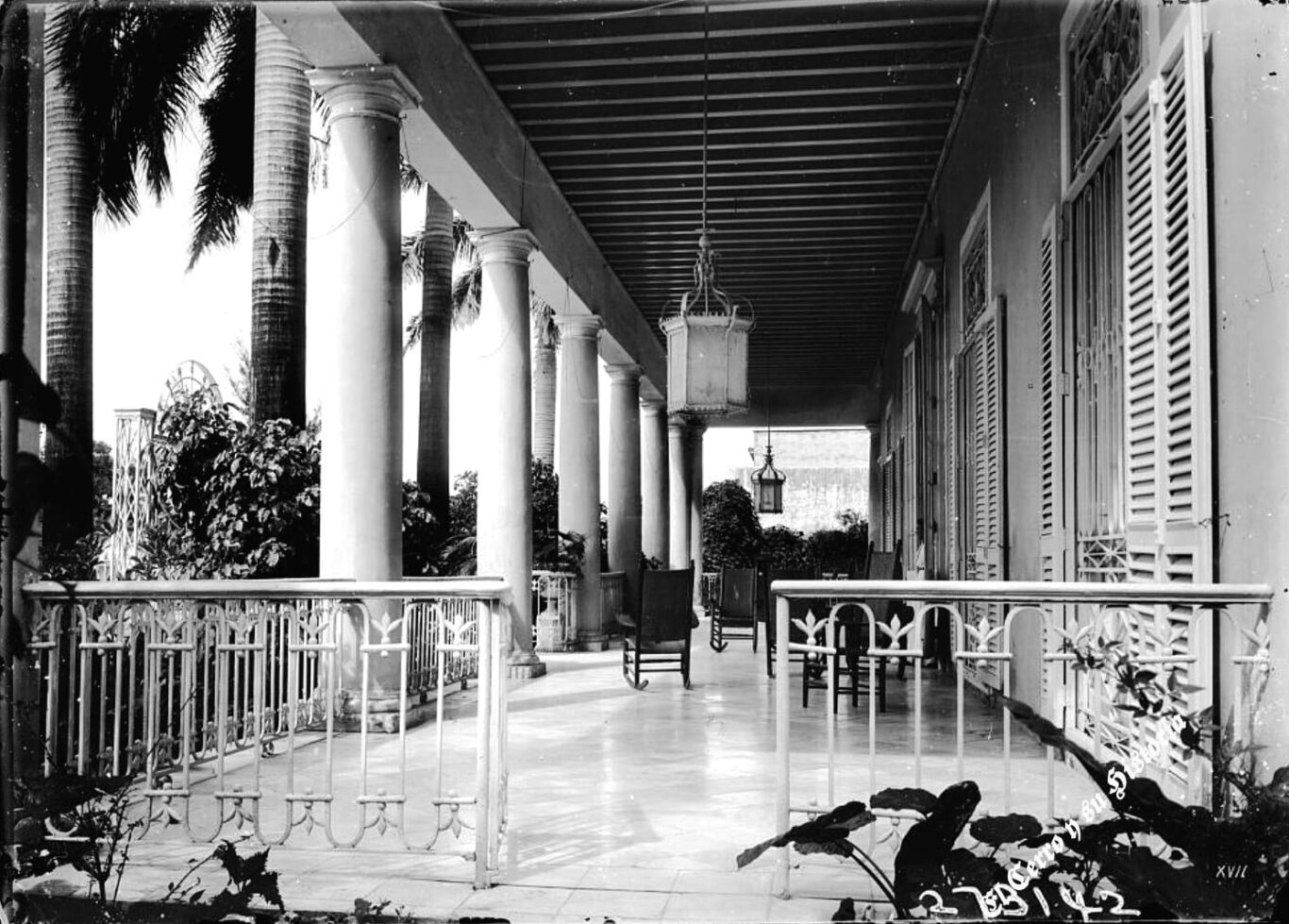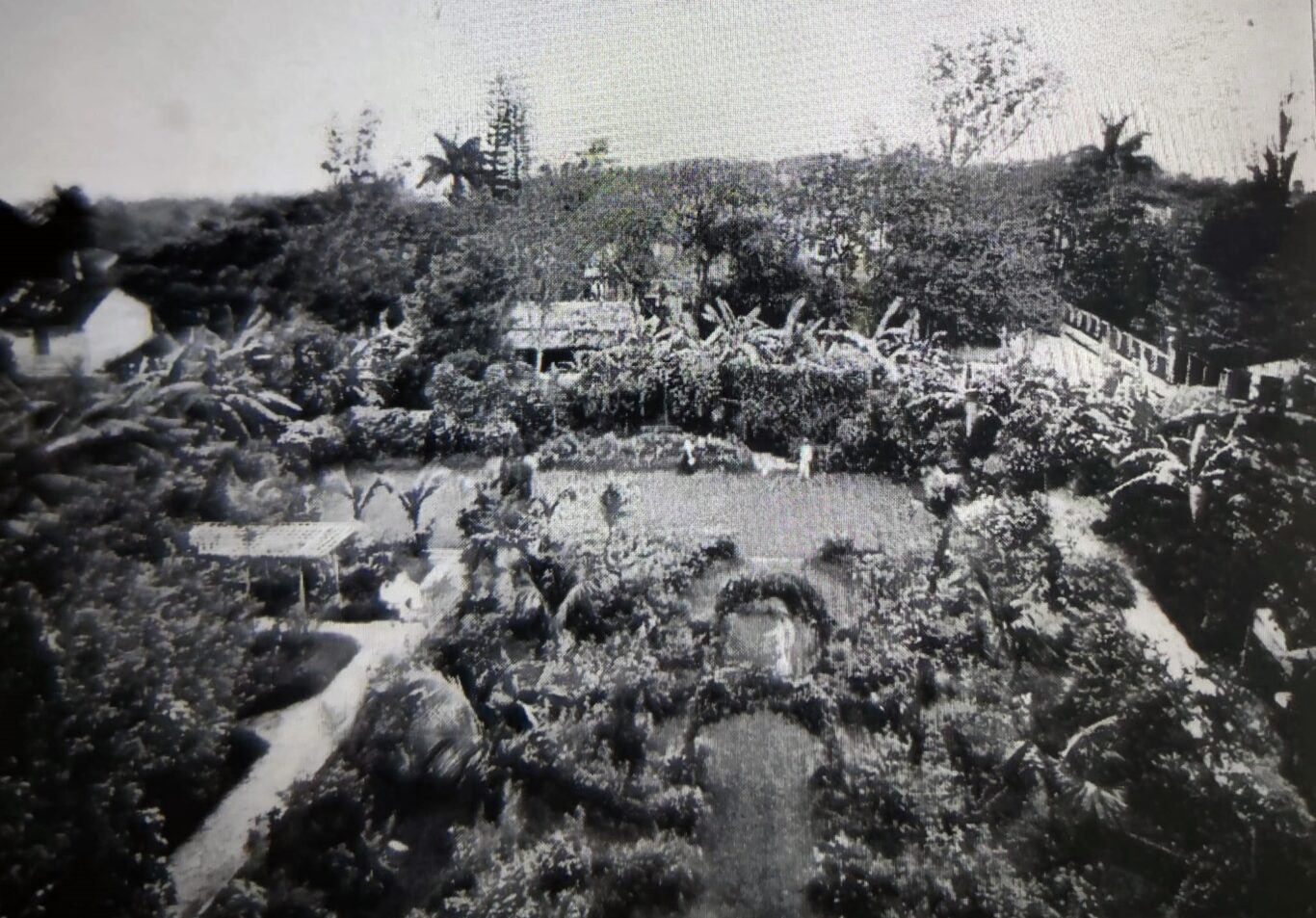El Cerro, in the second half of the 19th century, was an aristocratic neighborhood that had reached its splendor due to the settlement of wealthy families, mostly from intramural Havana. Some spent the hottest months in their new homes; others, all year round. The senior officials of the Spanish government on the island, including the captain-general, also enjoyed periods of rest there.
To build comfortable mansions, with neoclassical architecture, they used high-quality materials such as precious woods, marble, bronze, and polychrome glass. Away from the hustle and bustle of the city and in a healthier natural space, they represented the purchasing power of the owners, related to the production of tobacco and sugar. These mansions belonged to members of the nobility such as the counts of Peñalver, Fernandina, Santovenia and Lombillo, among others.
Not everything was beautiful, since the warehouse for runaway blacks was also built, where they took the slaves who had tried to live freely as fugitives from the opprobrious slavery regimen.
In one of the oldest mansions, the Bishop of Havana Juan José Díaz Espada Fernández y Landa used to spend his summers, which is why it went down in history as the Bishop’s Villa. He was in charge of designing it.

Bishop Espada contributed to the progress of the capital. Among other significant contributions, we remember the repair of the Cathedral, the construction of the Templete and the cemetery, educational reforms, and support for the scientist Tomás Romay for the use of the smallpox vaccine.
According to researcher Víctor Ramón Fuentes Fiallo: “The Villa of the Bishop, one or two caballerias long, was reached through Tulipán Street or Camino del Obispo, as it was called, and it was one of the few transversal streets that existed. at the beginning of the 19th century in Cerro, which began at Calzada del Cerro and ended next to the wall of Villa of the Bishop, on Clavel Street. Before being owned by Bishop Espada, the Villa of the Bishop was called El Factor, and was owned by Don Ramón Peñalver.”
When the Bishop died in 1832, the property deteriorated due to neglect and the effects of hurricanes. But it was recovered, as a residence, by the Counts of Peñalver.

Impressions of travelers
The Swedish novelist Fredrika Bremen visited Havana in 1851 and left us these memories:
“For three days I have been in a country house, in the town or neighborhood of Cerro, a couple of miles from Havana, in the home of a German-American family, the Scheiders, who have been kind enough to invite me to spend a few days with them to get to know something about country life (something I had really wanted) and the beautiful gardens of the Bishop, which are very close to their house…”
“It rained heavily and it was cold for a couple of days, but the morning was clear and beautiful and after breakfast, I wanted to visit the Bishop’s gardens at all costs, which are only a few minutes from the Cerro road.
“Yesterday and today the sun shone all day and I walked as I pleased through the Bishop’s gardens under the palms, reeds and a multitude of beautiful tropical trees among splendid and strange flowers and butterflies…”

And Dr. Ramón Piña y Peñuela, when he was researching to write the work Topografía médica de la isla de Cuba, published in 1855, recorded in his notebook: “In the Cerro neighborhood…there are beautiful country houses and recreational houses; it will have about 2,852 inhabitants; it is low and humid from the bridge below and from the bridge upwards is dry, ventilated and healthy. Intermittent fevers are seen. It has several slopes and many branches of the ditch that supply it with abundant water.”
At the end of the 1860s, the American traveler and painter Samuel Hazard was told about the beauties of the place and he did not miss the opportunity to visit it:
“In the Cerro the houses have a somewhat modernized appearance, with the garages in the back and portals in front, higher than the street level. It is not common for houses to have corridors, leading directly from the main entrance to long, cool halls that are, in reality, rooms and as such furnished, equipped with marble slab floors and linked to the rooms by a vaulted passage. These halls are often used as dining rooms, always cooled by the breeze that comes from the patio or through the wide living room, located at the entrance to the residence.
“The entire house is devoid of curtains and exposed to the curiosity of passersby. The ceilings are exceptionally high, and the houses, without exception, have a patio inside, which even on the hottest days provides some breeze.”

From the descriptions of travelers, we know that the patio of the residences was the most popular place for meetings, gatherings, or for individual enjoyment. The rooms communicated directly with this space which also had garden functions, benefiting from the breeze and sunlight. Adorned with flowers, fountains, statues, and fruit plants.
Communication routes and first buildings
The Monte Road, formerly known as Guadalupe, connected El Cerro with Havana and travelers could travel through it when heading to Marianao and Vuelta Abajo (Pinar del Río).
In 1855, a line of animal-drawn buses was established that reached Marianao. In Cerro, in 1863, the company had two warehouses for these vehicles.
At the beginning of the 18th century, a wood warehouse was created for the Havana arsenal and it is known that the first houses were built by José María Rodríguez and Francisco Betancourt, who decided to urbanize the place.
Already in 1807, it had its church dedicated to San Salvador, in homage to the Governor of Cuba, Salvador de Muro, Marquis of Someruelos.

Diplomatic venues and health centers
The number of villas, most of them concentrated on Tulipán Street, reached 28, according to the book Antillas, crónica general. España, published in 1871. The historian Jacobo de la Pezuela provided more details about the atmosphere that was enjoyed:
“This town, although somewhat subject to fever due to the abundance of its vegetation and the passage of the waters of the Aqueduct and the Ditch, is perhaps the most pleasant point and the best recreational residence found on the entire island. Nothing is livelier than their appearance when families sitting in the afternoon under the roofs of their houses, many from the capital converge on the road in open carriages. Except for that of Tulipán, which stands out on the right in the direction of the country house of Mr. Count of Peñalver, and that of the corner called Buenos Aires, this cheerful town barely has another street than the one that forms the road.”
It is not surprising, then, that the venues of several diplomatic representations also decided to establish themselves there, along with doctors, musicians, journalists, painters, and sculptors.
At the end of the 19th century, the owners of the country houses began to move to El Vedado. In the last decade of that century, some of the properties were sold and transformed into hospitals, company headquarters, or charitable associations. For example, on April 4, 1895, Manuel Valle, president of the Asturian Center, bought Leonor Herrera’s residence for 62,500 gold pesos and began the construction of the famous Villa Covadonga, inaugurated on March 15, 1897. It was the most relevant health house of the regional institutions created by Spanish immigrants.
The villa of the Counts of Santovenia, owned by Susana Benítez de Parejo, became a prestigious charity dedicated to the care of the elderly when its owner died in Spain; and the mansion of the Counts of Fernandina would house the headquarters of the Cuban Charity Association.
________________________________________
Sources:
Antillas, crónica general. España. Historia descriptiva de sus provincias, poblaciones más importantes y posesiones de ultramar, Rubio, Grillo and Vitturi publishers, Madrid, 1871.
Emilio Roig de Leuchsenring: La Habana. Apuntes históricos, Tomo I, Editor of the National Council of Culture publishers, Havana, 1963.
Jacobo de la Pezuela y Lobo: Diccionario geográfico, estadístico, histórico, de la isla de Cuba, Printing office of the Mellado establishment, Madrid, 1863.
Ramón Piña y Peñuela: Topografía médica de la isla de Cuba, Tiempo Printing and Binding, Havana 1855.
Samuel Hazard: A pluma y lápiz, Publisher: Cultural, s.a., Havana, 1928.
Víctor Ramón Fuentes Fiallo: “La Quinta del Obispo,” Revista del Jardín Botánico Nacional 30-31: 223-226, 2009-2010
Diario de la Marina










